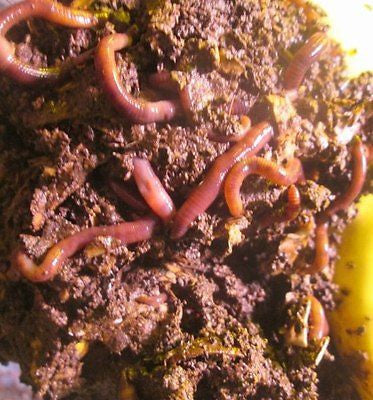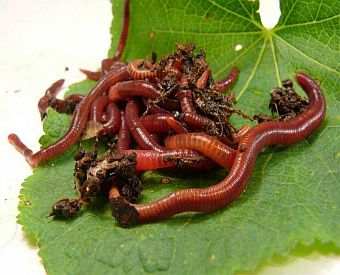Proven composting red wigglers: Start vermiculture today
Using Red Wigglers for Reliable Organic Waste Disposal
Making use of red wigglers for natural waste disposal offers a compelling strategy to handling food scraps while advertising ecological sustainability. These worms not just improve waste decomposition however also generate valuable worm spreadings, which can considerably boost soil wellness. Their ability to refine large volumes of natural material with marginal effort placements them as an available remedy for homes and areas alike. Comprehending the subtleties of establishing up a successful worm bin and keeping an optimal habitat is essential for maximizing their advantages. The following action in this process might stun you.
Benefits of Using Red Wigglers
One of the most compelling advantages of utilizing red wigglers for organic garbage disposal is their exceptional effectiveness in composting. These worms, clinically referred to as Eisenia fetida, are specifically adjusted for breaking down natural products, allowing them to process waste as much as two times their body weight every day. This fast disintegration not just accelerates the composting procedure yet additionally generates nutrient-rich worm spreadings that dramatically boost dirt top quality.
Furthermore, red wigglers add to a reduction in landfill waste. By diverting natural products from garbage dumps, they assist reduce methane discharges-- a potent greenhouse gas. This ecological advantage is critical in the battle against climate adjustment.
In addition, red wigglers are low-maintenance and can grow in numerous atmospheres, making them easily accessible for both newbie and skilled composters. Their ability to duplicate promptly makes sure a stable population, promoting continuous waste processing.
Establishing Your Worm Bin
Creating a reliable worm bin is important for optimizing the benefits of composting with red wigglers. The initial step is selecting a proper container. A bin constructed from plastic or wood, with an ability of 10 to 20 gallons, is suitable. Guarantee the container has sufficient water drainage holes to stop excess wetness, as red wigglers flourish in a moist yet not soggy setting.
(Western North Carolina Bait)Following, prepare the bed linen material, which serves as the worms' environment and food resource. The bin needs to be placed in a dark, temperature-controlled area, preferably in between 55 ° F and 77 ° F, to keep worm activity.
When the bin is set up, present the red wigglers, allowing them to adjust to their brand-new setting. A well-maintained container will certainly not only sustain the health and wellness of the worms but additionally assist in reliable disintegration of organic waste.
(red wigglers for sale)
What to Feed Red Wigglers
An understanding of the ideal diet plan for red wigglers is vital for preserving a healthy and balanced worm populace and optimizing composting effectiveness. Red wigglers prosper on a varied diet that primarily contains natural materials. Perfect food sources include veggie scraps, fruit peels, coffee premises, eggshells, and shredded paper. These items not just supply essential nutrients yet additionally contribute to the moisture balance within the worm container.
It is essential to avoid certain foods that can hurt the worm populace. Red wigglers need to not be fed meat, dairy items, oily foods, or refined items, as these can bring in bugs and create unpleasant smells. red wigglers. Additionally, citrus fruits and hot foods ought to be decreased, as their level of acidity can be destructive to worms
To advertise optimum digestion, food should be sliced right into smaller items, facilitating quicker malfunction and usage. Presenting food in moderation is additionally essential; overfeeding can result in anaerobic conditions and attract undesirable insects. Checking the worm bin for food consumption rates will certainly help make certain that red wigglers are obtaining an adequate diet plan while preserving an efficient composting atmosphere. Correct feeding methods are crucial for cultivating a growing ecosystem within the worm container.
Maintaining Your Worm Environment
A well-kept worm environment is crucial for the health and productivity of red wigglers. To make certain optimum conditions, it is vital to monitor temperature level, moisture, and aeration within the worm bin (red wigglers).
A great regulation of thumb is to maintain dampness at around 70% to 80%. If the bedding ends up being as well damp, it can lead to anaerobic conditions that are dangerous to the worms.

Utilizing Worm Castings in Gardening
Rich in nutrients and useful microorganisms, worm castings act as an extraordinary organic fertilizer for gardening. Produced via the gastrointestinal processes of red wigglers, these castings consist of a range of crucial nutrients, consisting of nitrogen, phosphorus, and potassium, which promote robust plant growth. Unlike synthetic plant foods, worm spreadings provide a slow-release device, guaranteeing that nutrients are available to plants over an extended duration, consequently reducing the risk of nutrient leaching and soil deficiency.
Along with nutrition content, worm spreadings improve dirt framework and oygenation, enhancing moisture retention and water drainage. The microbial life existing in worm spreadings helps to reduce microorganisms and advertises a healthy dirt ecosystem, further profiting plant health. When integrated into the soil or utilized as a leading clothing, worm castings can significantly boost seed germination prices, root development, and total plant vigor.
For ideal results, gardeners should apply worm spreadings at a rate of 1-2 inches per square foot, blending them right into the soil or integrating them right into potting blends. In general, making use of worm castings is an environmentally friendly method to improving soil fertility and ensuring prospering yard environments.
Verdict
